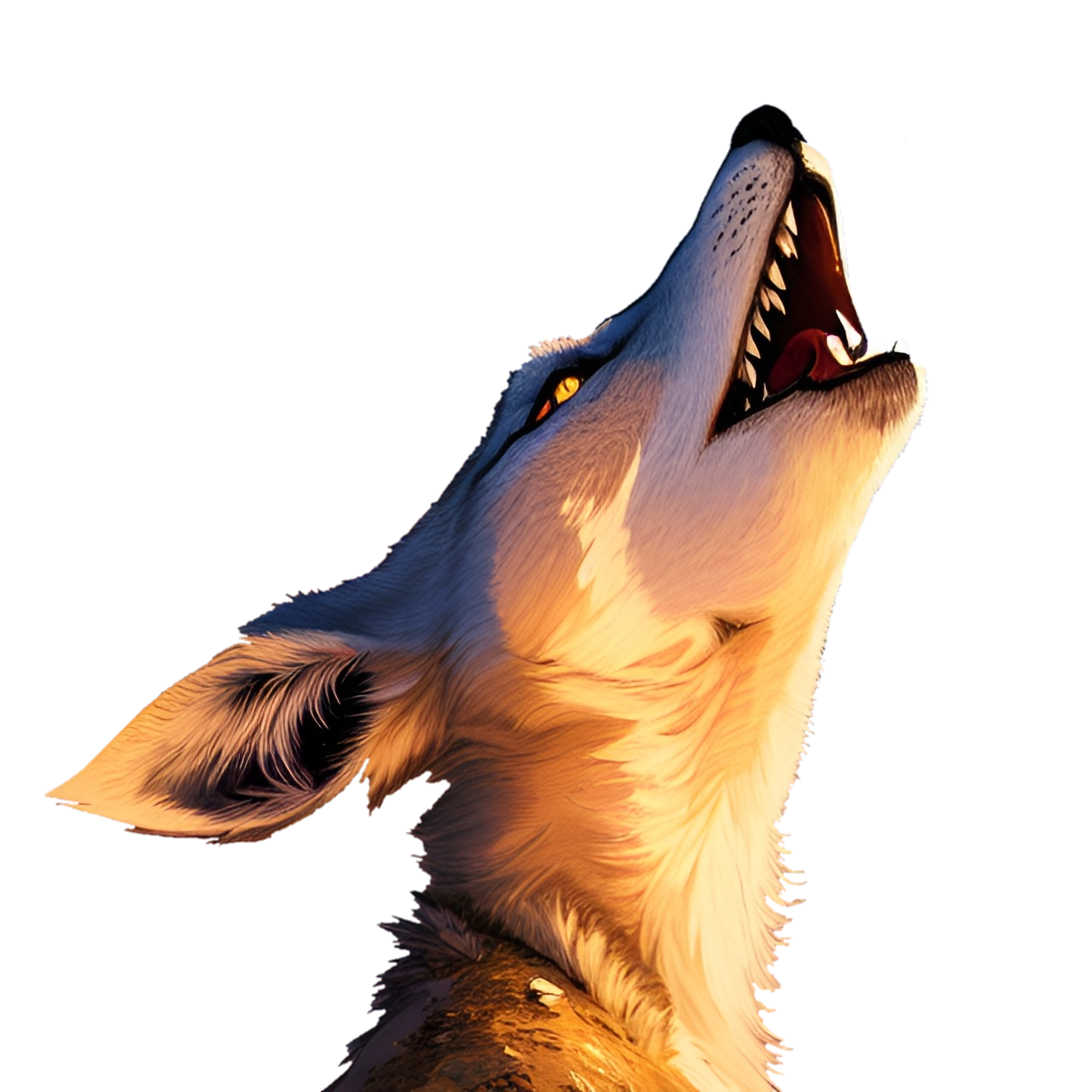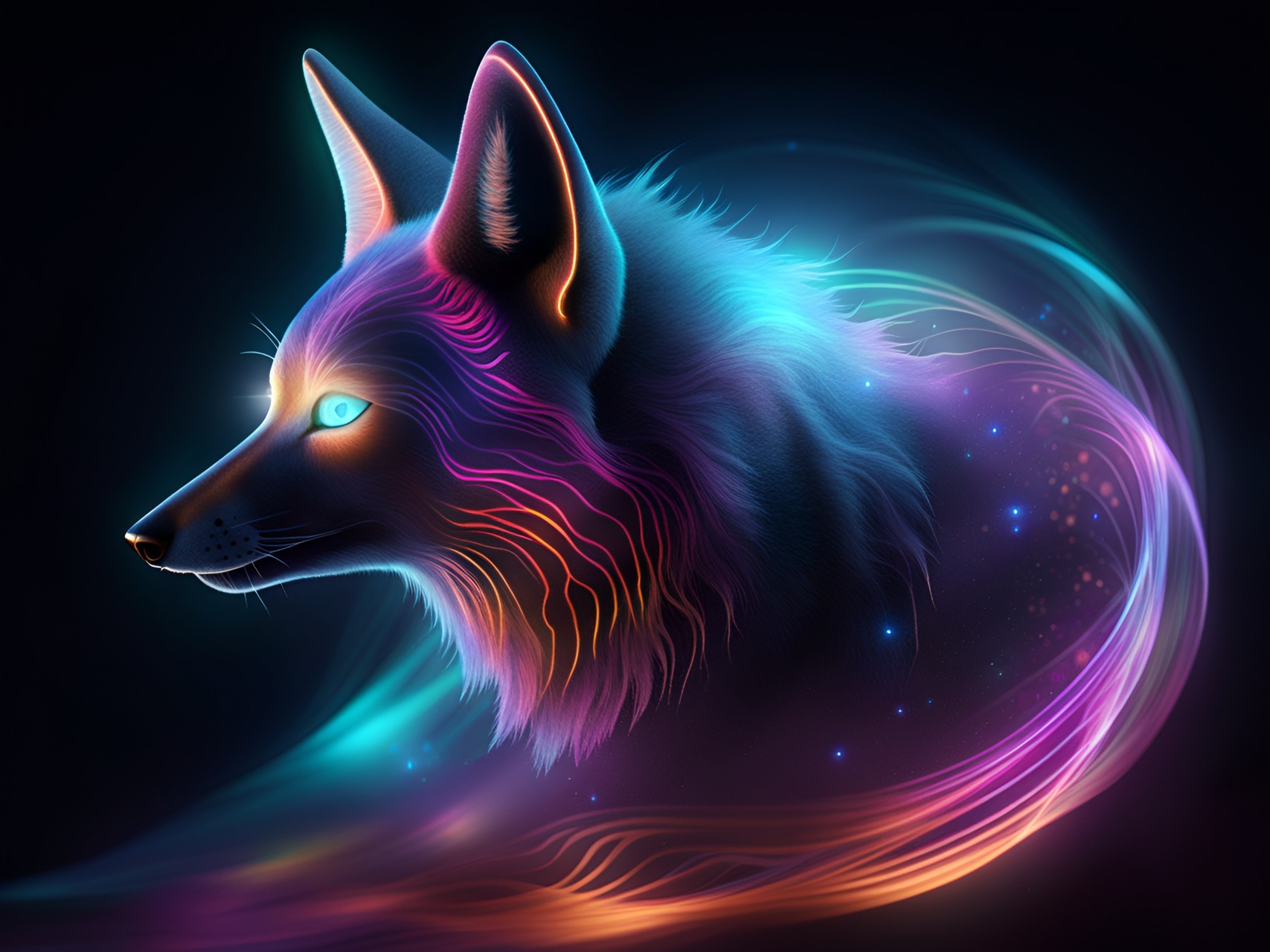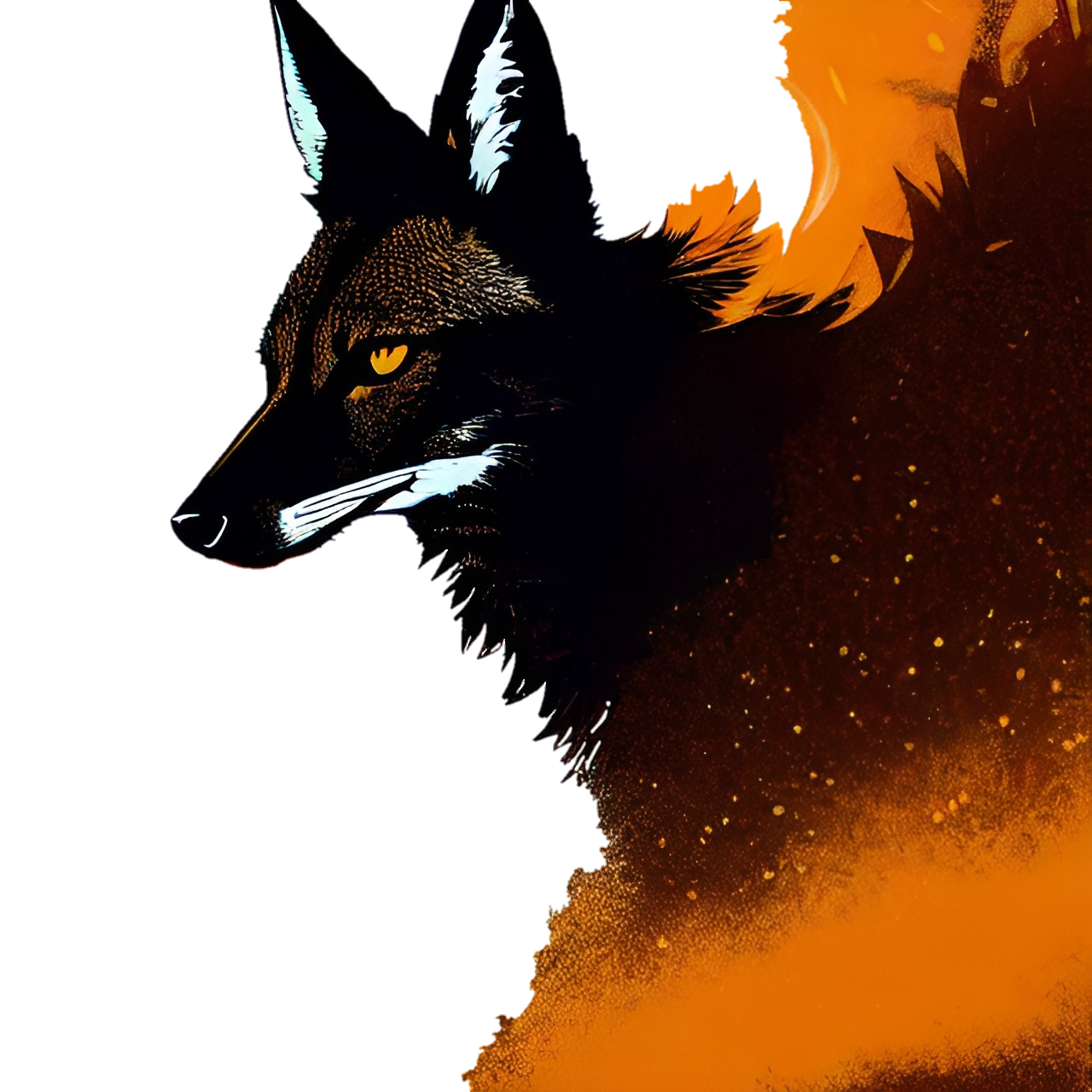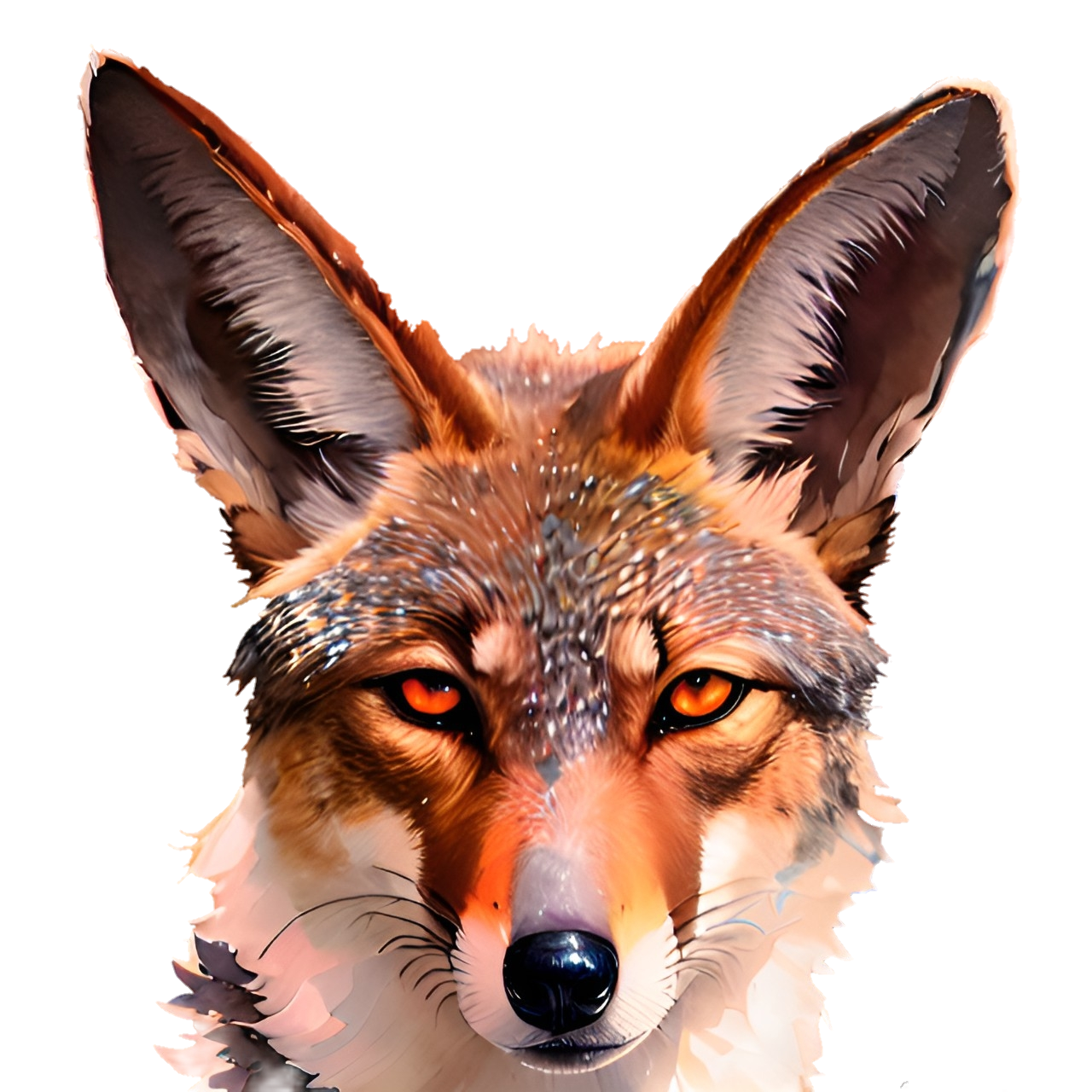Wata Jackal
A highly vocal species including yelling, yelping, woofing, whining, growling and cackling but are most known for their high pitch, whining howl. A common sound in the night, especially in the desert—often laced with Celestial Magic! One might think themselves dreaming, seeing a Wata Jackal dart across moonbeams for the first time, their pearly forms spectral and ethereal. In folklore, this beast often plays clever tricks on stronger animals and is a hero within the myths of the Khoekhoe, Oromoo and Soomaalida.
Jackals are adaptive, stealthy, cunning and wily, dodging traps and avoiding hunters even without magic. Some beleive they can erase their own tracks, feign death and immerse themselves in water to rid themselves of fleas. They are a common character in many Saan myths such as the The Jackal and the Sun. Though to others they are less favorable, painted as robbers or pirates.
Their racial magic grants these jackal far more perception than their ancestors possessed, using their Eye or Sense manifestations to track down prey, evade larger predators and to avoid regions with too strong an elemental influence. Those with slip or movement manifestations are incredibly evasive and mobile, living alongside far larger and more powerful beasts. Lastly is Sylthari's Voice, a mysterious ability with less obvious applications. One can hear them in the night, howling and yapping and chittering, their sounds easily mesmerizing, sedating and charming listeners. Heard before every hunt, it is uncertain whether they use this to sedate their prey or to divine the fortune of their hunt!
Jackals are adaptive, stealthy, cunning and wily, dodging traps and avoiding hunters even without magic. Some beleive they can erase their own tracks, feign death and immerse themselves in water to rid themselves of fleas. They are a common character in many Saan myths such as the The Jackal and the Sun. Though to others they are less favorable, painted as robbers or pirates.
Their racial magic grants these jackal far more perception than their ancestors possessed, using their Eye or Sense manifestations to track down prey, evade larger predators and to avoid regions with too strong an elemental influence. Those with slip or movement manifestations are incredibly evasive and mobile, living alongside far larger and more powerful beasts. Lastly is Sylthari's Voice, a mysterious ability with less obvious applications. One can hear them in the night, howling and yapping and chittering, their sounds easily mesmerizing, sedating and charming listeners. Heard before every hunt, it is uncertain whether they use this to sedate their prey or to divine the fortune of their hunt!
Racial Magic
As these canines are a widespread species, adapted to many biomes across Alkelbulan, they are capable of inheriting an equally wide range of Racial Magic. Some are common to specific regions while others vary from pack to pack or even individual to individual. Each jackal can inherit two of those listed here.
First Ability
Sylthari's Voice | Able to lace their voice with mental effects related to Sylthari including charming, soothing, hypnitism, drowsiness, calming and tranquility, waking dreams, fixation and mesmerizing. Fabled to be able to reaveal the true nature or fate of those who hear it sing. | |
Sylthari's Movement | Able to walk or move freely through moonlight and starlight or use it as a solid foothold. They can also briefly transform into a beam of moonlight, travel quickly in a given direction and reform elsewhere. They cannot be harmed or impeded by their aspect either. |
Second Ability
Shield | Completely immune to all Flithmar or Shil Magic and naturally occuring flames or smoke/ash. Totally fireproof or smokeproof, capable of safely breathing despite smoke. | |
Eye | ||
Sense | Able to sense or feel their aspect in their environment and anything interacting with it, despite any obstructions or barriers. Also cannot be harmed by their aspect. Same distribution as Eye but also includes another variant in KwaZulu, Rylmer Sense. | |
Slip | When activated, their body will transform into their aspect (Shil or Flithmar) wherever anything touches them, most materials passing through harmlessly and interacting with that aspect (ex: burning). This is an automatic defense, converting back into flesh quickly once the foreign object is removed. |
Anatomy
Original Ancestor
black-backed jackal
Lifespan
Size
Small and lithe, jackal have slender bodies, long legs and large ears. Their coat is reddish brown to tan with a distinctive black saddle and paws. In their magic form, their neck and face or their paws become translucent and their fur has a pearly glow or shimmers like a nebula, ghostlike and ethereal. Otherwise, the saddle of those with Sense manifestations will take on the hue of their aspect while the same occurs in the eyes of those with Eye abilities.
These jackal prefer open areas with little vegetation. They can tolerate coastal desert, farmland, savannah and alpine regions. Wata Jackal are found in Shamsi Desert, Dawn Ahrayn, Kasar Wuta, Gaarreen Ho'aa, Nyasi za Rangi and KwaZulu.
Jackals form monogamous pairs. They are highly territorial, marking their range with urine and feces and aggressively expelling intruders. However, elder offspring may stay to raise the next litter before departing. Mating occurs from May to August and pregnancy lasts 60 days. 1-9 pups are born, blind at first and not opening until 8-10 days. They also wont emerge from the den until 3 week, kept under surveillance while the rest provide food. They are then weaned at 8-9 weeks and begin hunting by 6 months. They quarrel more the older they get, the elder litter dispersing once they become yearlings.
Omnivorous. They eat invertebrates (beetles, grasshoppers, crickets, termites, millipedes, spiders and al-Mawt Scorpion), mammals (rodents, Qafz Jerboa, Sahra Hare and young antelope) birds, Rock Agama, snakes, carrion, eggs, beached marine mammals, fish, fruit and mussels. It will eat a Raqs Gazelle at largest. They have been known to hunt domestic animals like dogs, cats, pigs, goats, sheep and poultry. Jackals are also preyed upon or compete with wolves, badgers, Manid Hyena, leopards, ǁko Wild Dog and eagles.
Considered pests, often killing livestock, humans have tried hunting them and even poisoning them but they have proved adaptable, resourceful and clever. They usually detect poison in food or regurgitate it. Abantu tribes in KwaZulu are known to make hats and cloaks out of their skins.
|
All images were created by me using AI generator, is my own art or a combination of the two!
(AI generator is wombo dream.ai) |















Comments